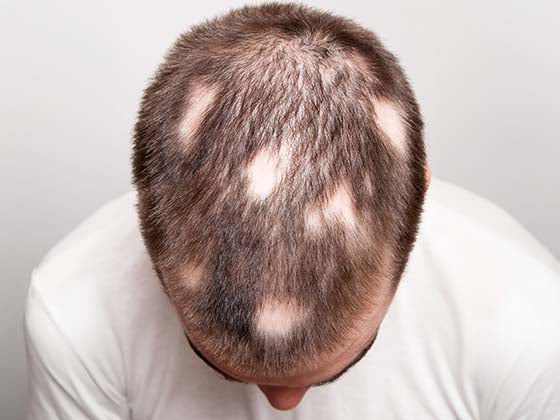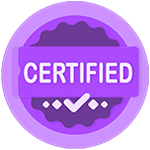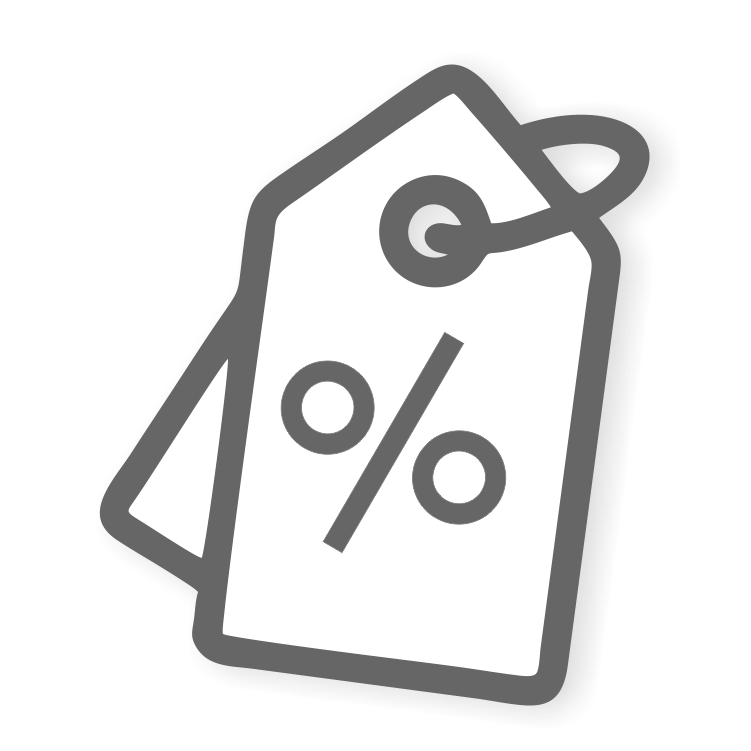Vitamin E, a cornerstone nutrient lauded for its antioxidant prowess, plays a vital role in safeguarding our cells from oxidative damage. However, like many things in life, exceeding recommended intake can have unintended consequences. This article delves into the lesser-known realm of vitamin E toxicity, exploring the potential risks associated with excessive consumption. We'll navigate the landscape of symptoms that might arise and equip you with practical strategies for prevention. By understanding the delicate balance of vitamin E's benefits and potential drawbacks, we can harness its power for optimal health while minimising the risk of adverse effects.
The Hidden Dangers of Excessive Vitamin E Intake

While vitamin E is a well-known antioxidant crucial for human health, exceeding the recommended daily intake through high-dose supplementation can pose unforeseen health risks. One significant concern is the potential for increased bleeding. Vitamin E possesses blood-thinning properties, which can be advantageous in specific cases, but detrimental in others. High-dose supplementation can interfere with the efficacy of blood thinners and antiplatelet medications, raising the risk of uncontrolled haemorrhage. Furthermore, excessive vitamin E intake may hinder the effectiveness of certain cancer treatments and has even been linked to an increased risk of specific cancers in some studies.
Fortunately, these risks are entirely preventable. A balanced diet rich in nuts, seeds, whole grains, and vegetables provides the recommended daily intake of vitamin E without the associated dangers. If considering supplementation, a thorough discussion with your physician is paramount, particularly if you have any underlying health conditions or take medications that may interact with vitamin E. By adopting a measured approach to vitamin E intake and consulting your doctor, you can harness the health benefits of this essential nutrient while avoiding its potential pitfalls.
Identifying the Symptoms of Vitamin E Toxicity

Identifying the symptoms of vitamin E toxicity is important because, unlike most vitamins, vitamin E is fat-soluble. This means it can accumulate in the body over time, leading to potential health problems if left unchecked. Here's why recognizing Vitamin E toxicity symptoms and signs is crucial:
-
In recommended doses, vitamin E is a safe and essential nutrient. However, excessive intake, particularly through supplements, can lead to toxicity.
-
Identifying symptoms early allows you to adjust your vitamin E intake and potentially avoid more serious complications.
-
Some signs of vitamin E toxicity can be mistaken for other health issues. Recognizing the specific symptoms associated with high vitamin E intake can help you and your doctor reach an accurate diagnosis.
Here are some of the common symptoms of vitamin E toxicity to be aware of:
-
Vitamin E can interfere with blood clotting, potentially leading to easy bruising, nosebleeds, or bleeding gums.
-
Nausea, vomiting, diarrhoea, and stomach cramps are commonly reported symptoms of vitamin E toxicity.
-
Feeling unusually tired or experiencing muscle weakness can be signs of high vitamin E intake.
-
Headaches and dizziness are also potential symptoms.
If you experience any of these symptoms and suspect they might be related to high vitamin E intake, it's crucial to consult your doctor. They can assess your situation, recommend adjusting your dosage or stopping supplementation altogether, and ensure your overall health isn't compromised. By being aware of the potential symptoms of vitamin E toxicity, you can take control of your health and maintain a safe and beneficial vitamin E intake. Remember, it's always best to consult a doctor before starting any new supplements, especially if you have underlying health conditions or take medications.
The Health Risks of Overdosing on Vitamin E

Overdosing on vitamin E, particularly through supplements, can pose several health risks. Here’s a detailed look at the potential adverse effects and health risks associated with vitamin E toxicity:
-
Increased Risk of Bleeding and Haemorrhage
-
Anticoagulant Effects: High doses of vitamin E can inhibit platelet aggregation and interfere with vitamin K-dependent clotting factors, leading to increased bleeding risk.
-
Hemorrhagic Stroke: Excessive vitamin E can increase the risk of hemorrhagic stroke, a type of stroke caused by bleeding in the brain.
-
Prolonged Bleeding: Even minor cuts or injuries can result in prolonged bleeding times.
-
Gastrointestinal Issues
-
Nausea and Vomiting: Overconsumption can lead to persistent nausea and vomiting.
-
Diarrhoea: High doses can cause digestive disturbances, including diarrhoea.
-
Stomach Cramps: Abdominal pain and cramping are common gastrointestinal side effects.
-
Neurological Symptoms
-
Headaches: Frequent and severe headaches can result from vitamin E toxicity.
-
Dizziness: An overdose can cause vertigo or dizziness, impacting balance and coordination.
-
Blurred Vision: Visual disturbances, including blurred vision, can occur with excessive intake.
-
Fatigue and Muscle Weakness
-
General Fatigue: A common symptom, resulting from the body’s stress response to high levels of vitamin E.
-
Muscle Weakness: Overdosing can lead to muscle weakness and a decrease in physical performance.
-
Immune System Effects
-
Immune Suppression: While moderate vitamin E boosts the immune system, excessive amounts can suppress immune function, making the body more susceptible to infections.
-
Oxidative Stress
-
Pro-oxidant Effect: In high doses, vitamin E can act as a pro-oxidant, leading to oxidative stress and damage to cells and tissues, contrary to its antioxidant properties at normal levels.
-
Thyroid Dysfunction
-
Interference with Thyroid Function: High doses can disrupt thyroid hormone production and metabolism, potentially leading to thyroid dysfunction.
-
Interaction with Medications
-
Anticoagulants and Antiplatelets: Vitamin E can enhance the effects of blood-thinning medications, increasing the risk of bleeding.
-
Chemotherapy Drugs: High doses of vitamin E may interfere with the effectiveness of certain chemotherapy treatments.
-
Cholesterol-lowering Drugs: It may interact with statins and niacin, reducing their effectiveness.
-
Reproductive Health
-
Effects on Pregnancy: While the exact impact is unclear, excessive vitamin E during pregnancy may pose risks to both the mother and the fetus, potentially leading to complications.
Vitamin E is crucial for maintaining health, but it’s important to consume it within safe limits. Excessive intake, particularly from supplements, can lead to significant health risks. Awareness and adherence to recommended dosages can help prevent the adverse effects of vitamin E toxicity. If you experience symptoms of overdose, seek medical advice immediately.
Safe Vitamin E Consumption: Recommended Dosages

Vitamin E, a powerful antioxidant, shields our cells from free radical damage and supports various bodily functions. While it's a crucial nutrient, exceeding recommended intake can lead to complications. This guide explores safe vitamin E consumption levels to ensure you reap the benefits without the risks.
1. Understanding Daily Needs:
-
The Food and Nutrition Board (FNB) establishes Recommended Dietary Allowances (RDAs) for vitamin E based on age and sex. These represent the daily amount sufficient for most healthy individuals.
-
RDAs for adults (14 years and older) typically range from 15 mg (4 IU) to 15 mg alpha-tocopherol (22.5 IU) daily.
2. Upper Limits (ULs):
-
The FNB also sets Tolerable Upper Intake Levels (ULs) for vitamin E. These represent the maximum daily intake unlikely to pose adverse health effects for most individuals.
-
The UL for adults is 1,000 mg (1,500 IU) of vitamin E from all sources combined.
3. Reaching Your Needs Through Diet:
-
Aim for a balanced diet rich in vitamin E-containing foods. Excellent sources include various nuts (almonds, peanuts), seeds (sunflower, pumpkin), vegetable oils (sunflower, olive), green leafy vegetables (spinach, kale) and whole grains.
4. Supplement Considerations:
-
If considering a vitamin E supplement, consult your doctor first. They can assess your individual needs and advise on appropriate dosages. Remember, supplements can interact with medications. Be transparent with your doctor about all supplements you take.
By following recommended daily allowances and staying within the ULs, you can ensure safe vitamin E consumption. A balanced diet rich in vitamin E-containing foods can often fulfill your daily needs. However, if considering supplementation, prioritize guidance from your healthcare provider.
Treatment and Prevention: Addressing Vitamin E Toxicity

Fortunately, most cases of vitamin E toxicity are mild and resolve with stopping all vitamin E intake. In severe situations, medical intervention might involve monitoring blood clotting factors and potentially administering vitamin K to counteract excessive blood thinning. The best defence, however, is prevention. Sticking to recommended dietary intakes and avoiding excessive supplementation keeps you within the safe zone and allows you to enjoy the benefits of vitamin E without the risks. Continue reading to understand it in detail.
Immediate Steps to Take in Case of Vitamin E Overdose

If you suspect a vitamin E overdose, the absolute most important step to take immediately is to call Poison Control or rush to the nearest hospital.
They will be able to give you specific instructions based on the severity of the situation. In the meantime, here's what you can generally do while waiting:
-
Stop taking vitamin E supplements: This is crucial to prevent further intake.
-
Gather information: If possible, collect any leftover vitamin E bottles or packaging to provide details to Poison Control.
-
Monitor the person: If the person is conscious, observe for any concerning symptoms like severe nausea, vomiting, or difficulty breathing.
-
Remember: Do not induce vomiting unless instructed.
It is always best to seek professional medical advice immediately in case of a suspected overdose.
How to Prevent Vitamin E Toxicity: Tips and Strategies

Vitamin E is a vital nutrient, but exceeding recommended intake levels can lead to toxicity. Thankfully, prevention is straightforward. Here's a detailed breakdown of tips and strategies to keep you safe:
-
Dosage is Key: The Tolerable Upper Intake Level (UL)/ Safe Vitamin E Dosage is 1,000mg per day for adults. This includes all sources, so factor in your diet when considering supplements.
-
Less is Often More: Discuss your needs with your doctor. In most cases, a healthy diet provides sufficient vitamin E, and high-dose supplementation isn't necessary.
-
Read Labels Carefully: Be aware of the amount of vitamin E per serving in your multivitamin or other supplements. Consider alternative products with lower vitamin E content if needed.
-
Nature's Bounty: A diet rich in fruits, vegetables, nuts, seeds, and whole grains naturally provides vitamin E. Load up on these powerhouses!
-
Variety is Key: Include a diverse range of these foods to ensure a well-rounded intake of different vitamin E forms (tocopherols and tocotrienols).
-
Focus on Whole Foods: Opt for whole foods over processed options. Processing can sometimes destroy nutrients like vitamin E.
-
Open Communication: Discuss your vitamin intake with your doctor, especially if you have any underlying health conditions.
-
Medications Matter: Certain medications can interact with vitamin E. Let your doctor know about all medications you're taking to avoid potential complications.
-
Regular Checkups: Schedule regular checkups with your doctor to monitor your overall health and identify any potential vitamin deficiencies.
-
Be Wary of High-Dosage Marketing: Don't be swayed by claims about high-dose vitamin E offering additional benefits. Research often doesn't support these claims, and they can be risky.
-
Supplement Confidence: If you choose to take a vitamin E supplement, stick to reputable brands and consult a pharmacist for guidance.
By following these tips and strategies, you can ensure you get the recommended amount of vitamin E and avoid the potential health risks associated with excessive intake. Remember, a balanced diet and open communication with your doctor are key to optimal health.
Navigating Vitamin E Supplements: Making Informed Choices

Vitamin E is a powerhouse nutrient lauded for its antioxidant properties and role in supporting overall health. However, navigating the world of vitamin E supplements can be tricky. To ensure you're making informed choices, consider these key points:
-
Dietary Adequacy: A balanced diet rich in nuts, seeds, whole grains, and vegetables often provides sufficient vitamin E for most healthy adults.
-
Consult Your Doctor: Discuss your individual needs with your doctor. They can assess your dietary intake and determine if a supplement is necessary based on potential deficiencies or specific health conditions.
-
Dosage Matters: The Tolerable Upper Intake Level (UL) for vitamin E is 1,000mg per day for adults. Be mindful of the amount of vitamin E per serving in your chosen supplement, factoring in your dietary intake to avoid exceeding the UL.
-
Form Matters: Vitamin E exists in various forms (tocopherols and tocotrienols). Some supplements may focus on specific forms, impacting absorption and potential benefits. Discuss the best form for your needs with your doctor or a registered dietitian.
-
Quality Counts: Choose reputable brands with third-party certifications ensuring quality and purity.
-
Potential Interactions: Vitamin E can interact with certain medications, particularly blood thinners and antiplatelet drugs. Inform your doctor about all medications you take before starting a vitamin E supplement.
-
Hidden Dangers: Excessive vitamin E intake can increase bleeding risk and potentially hinder the effectiveness of some cancer treatments. Be cautious of high-dose supplements and prioritize a balanced diet for vitamin E.
-
Food First: Prioritize incorporating vitamin E-rich foods like sunflower seeds, almonds, avocados, and spinach into your diet. This ensures a natural source of this essential nutrient.
-
Multivitamins: If a multivitamin is part of your routine, choose one with a moderate dose of vitamin E (around 15mg) to avoid exceeding the UL.
-
Communication is Key: Open communication with your doctor is crucial when navigating vitamin E supplements. Discuss your needs, potential interactions with medications, and the best approach for you.
-
Less is Often More: High-dose vitamin E supplementation is rarely necessary and can be risky. Aim for a balanced diet and moderate supplementation if needed, following your doctor's guidance.
By following these steps, you can make informed decisions about vitamin E supplements and ensure you're getting the right amount of this essential nutrient to support your overall health.
Beyond the Basics: Integrating Vitamin E Safely into Your Life

Vitamin E goes beyond a simple nutrient; it's a partner in promoting overall well-being. Having explored safe consumption levels, let's delve into practical ways to integrate vitamin E effectively.
-
First, prioritize a balanced diet rich in vitamin E sources like nuts, seeds, healthy oils, and leafy greens. This dietary foundation ensures you're getting a natural and readily absorbed form of vitamin E.
-
If considering supplementation, consult a healthcare professional. They can assess your individual needs and recommend the appropriate dosage, if needed. Remember, supplements can interact with medications, so transparency with your doctor is crucial.
-
Finally, don't underestimate the power of sun protection! While vitamin E acts as an antioxidant, sun exposure depletes its stores in the skin. Consistent use of sunscreen safeguards your skin and optimizes the benefits of vitamin E.
By following these simple strategies, you can integrate vitamin E safely and effectively into your life, reaping its antioxidant power for a healthier you.
Dietary Sources vs. Supplements: Balancing Vitamin E Intake

Vitamin E is a crucial fat-soluble antioxidant that plays a significant role in maintaining healthy skin, vision, and immune function. It also protects cells from oxidative damage. Balancing vitamin E intake through dietary sources and supplements is essential for optimal health. Here's an in-depth look at both sources and how to achieve a balanced intake:
A. Dietary Sources of Vitamin E
-
Nuts and Seeds
-
Almonds: One of the richest sources of vitamin E, almonds provide a substantial amount of this nutrient. A handful of almonds can fulfill a significant portion of the daily requirement.
-
Sunflower Seeds: These seeds are not only high in vitamin E but also packed with other essential nutrients like selenium and magnesium.
-
Vegetable Oils
-
Sunflower Oil: A tablespoon of sunflower oil can meet nearly a quarter of the daily vitamin E requirement.
-
Olive Oil: Though not as rich as sunflower oil, olive oil still provides a good amount of vitamin E and is a healthier option for cooking.
-
Green Leafy Vegetables
-
Spinach: This leafy green is an excellent source of vitamin E, along with a host of other vitamins and minerals.
-
Broccoli: Another green vegetable that contributes to vitamin E intake, broccoli can be included in various dishes.
-
Fruits
-
Avocado: A versatile fruit, avocado is rich in healthy fats and vitamin E. It can be added to salads, smoothies, or eaten on its own.
-
Kiwano Fruit: As previously mentioned, kiwano is another fruit that provides a good amount of vitamin E.
-
Fortified Foods
-
Many cereals and other processed foods are fortified with vitamin E, making it easier to meet daily requirements.
B. Supplements
While dietary sources are the preferred method of obtaining vitamin E due to the additional nutrients they provide, supplements can be useful in certain situations. Here’s what to consider:
-
Dietary Restrictions: Individuals with dietary restrictions or allergies that limit their intake of vitamin E-rich foods may benefit from supplements.
-
Medical Conditions: Certain medical conditions, such as cystic fibrosis or Crohn’s disease, can impair fat absorption, making it difficult to absorb vitamin E from food.
-
Aging: As people age, their ability to absorb nutrients decreases, sometimes necessitating supplementation.
-
Skin Health: Those looking to improve skin health may use vitamin E supplements or topical applications for targeted benefits.
Choosing the Right Supplement
Choosing the right supplements is very crucial. Certain key pointers to keep in mind while doing so are:
-
Natural vs. Synthetic: Natural vitamin E (labeled as d-alpha-tocopherol) is more bioavailable than synthetic forms (labeled as dl-alpha-tocopherol). Always opt for natural supplements if possible.
-
Dosage: The recommended daily allowance (RDA) for adults is 15 mg (22.4 IU). It’s important not to exceed the upper limit of 1,000 mg (1,500 IU) per day to avoid adverse effects.
-
Form: Vitamin E supplements come in various forms, including capsules, soft gels, and liquid drops. Choose a form that suits your preference and needs.
Balancing Vitamin E Intake
Prioritize getting vitamin E from whole foods as they offer additional health benefits from other nutrients and dietary fiber. Include a variety of vitamin E-rich foods in your diet to ensure a balanced intake. Use supplements to fill in any gaps in your diet, but avoid relying solely on them. Consult with a healthcare provider before starting any supplementation, especially if you have underlying health conditions or are taking other medications. Also, periodic blood tests can help monitor vitamin E levels, ensuring you are neither deficient nor exceeding the recommended intake. Adjust your diet and supplementation based on these tests and professional guidance.
Balancing vitamin E intake through a combination of dietary sources and supplements ensures you reap the full benefits of this essential nutrient while minimizing the risk of toxicity. By prioritizing natural food sources and using supplements judiciously, you can maintain optimal health and support various bodily functions effectively.
The Role of Health Professionals in Managing Vitamin E Levels

Health professionals, including doctors, dietitians, and nutritionists, are essential in managing vitamin E levels to ensure optimal health and prevent deficiencies or toxicities. They begin by assessing patients' dietary habits, medical history, and conducting blood tests to evaluate vitamin E status. Personalized recommendations are provided, which may include dietary adjustments to incorporate vitamin E-rich foods like nuts, seeds, and leafy greens, or the prescription of supplements if necessary. Regular check-ups and follow-ups help monitor vitamin E levels and overall health, allowing for adjustments to treatment plans as needed. These professionals also educate patients on the importance of vitamin E, its benefits, and proper supplement use, emphasizing the need to avoid exceeding recommended dosages.
For special populations, such as those with chronic conditions affecting fat absorption or specific age groups, tailored advice and monitoring are provided to ensure adequate vitamin E intake. Pediatricians and geriatricians focus on the unique needs of children and the elderly, while dietitians develop specialized diets for patients with conditions like cystic fibrosis or Crohn’s disease. Additionally, health professionals engage in research and development, conducting clinical trials to understand the effects of vitamin E on various health conditions and updating public health policies and dietary guidelines accordingly. Through comprehensive assessment, personalized care, and ongoing education, health professionals play a crucial role in maintaining balanced vitamin E levels and promoting overall well-being.
Vitamin E in Skincare: Understanding the Implications of Topical Use

Topical application of Vitamin E has been widely studied and used for its potential benefits on the skin. Here are some key implications of using Vitamin E topically:
-
Antioxidant Properties
-
Free Radical Protection: Vitamin E is a potent antioxidant that helps protect the skin from damage caused by free radicals, which can result from exposure to UV rays, pollution, and other environmental factors.
-
Anti-Aging: By neutralizing free radicals, Vitamin E can help reduce signs of aging such as wrinkles, fine lines, and age spots.
-
Moisturizing Effects
-
Hydration: Vitamin E is known for its ability to enhance the skin's moisture retention. It helps strengthen the skin barrier, preventing moisture loss and keeping the skin hydrated.
-
Softening: Regular use of Vitamin E can lead to softer, smoother skin.
-
Wound Healing
-
Scar Reduction: Some studies suggest that Vitamin E can help in reducing the appearance of scars, although results can vary. It is believed to promote skin healing and regeneration.
-
Healing Burns and Cuts: Vitamin E oil is often used on minor burns and cuts to speed up the healing process and reduce inflammation.
-
Anti-Inflammatory Effects
-
Soothing Irritation: Vitamin E can help calm and soothe irritated skin, making it beneficial for conditions like eczema and psoriasis.
-
Reducing Redness: Its anti-inflammatory properties can help reduce redness and swelling associated with various skin issues.
-
Sun Protection and Repair
-
UV Damage Repair: While Vitamin E is not a substitute for sunscreen, it can help repair and protect the skin from the effects of UV exposure.
-
Sunburn Relief: It can provide some relief from sunburn by moisturizing and promoting healing of the damaged skin.
-
Combination with Other Ingredients
-
Enhanced Effects: When combined with other antioxidants like Vitamin C, Vitamin E can have enhanced protective effects. It is often included in formulations with other beneficial ingredients to boost overall skin health.
Some people may experience allergic reactions to topical Vitamin E, including redness, itching, or rash. For individuals with acne-prone skin, Vitamin E may cause breakouts as it can be comedogenic (clog pores). Below are certain practical Vitamin E usage tips:
-
Patch Test: It is advisable to perform a patch test before using Vitamin E on a larger area of the skin to check for any adverse reactions.
-
Application: Vitamin E oil can be applied directly to the skin or mixed with other skincare products. It's often used in night-time routines to allow for better absorption and effectiveness during the skin's repair phase.
While Vitamin E offers several potential benefits for skin health, it's important to consider individual skin types and conditions, and consult with a dermatologist for personalised advice
Empowering Your Health Decisions: Informed Use of Vitamin E

Vitamin E, both dietary and topical, presents a multifaceted story. By understanding the science behind its benefits and potential drawbacks, you can make informed choices. Prioritize a balanced diet rich in vitamin E sources for overall well-being. If considering supplementation, consult your doctor to ensure it aligns with your individual needs. When it comes to topical use, choose reputable products with alpha-tocopherol and proper sun protection. Remember, consistency and a holistic approach are key to achieving healthy, radiant skin. By empowering yourself with knowledge, you can unlock the true potential of vitamin E for your health and beauty.
__________________________________________________________________
















